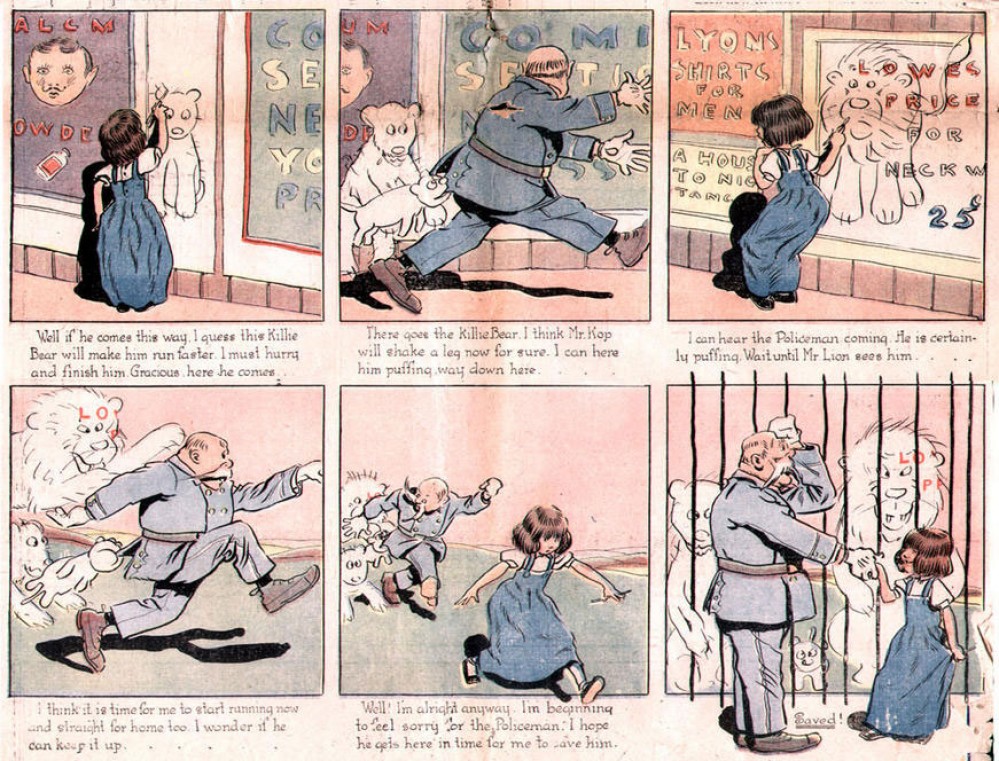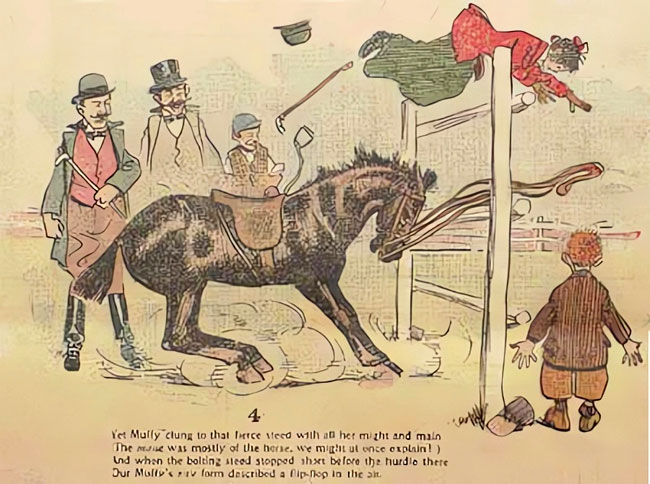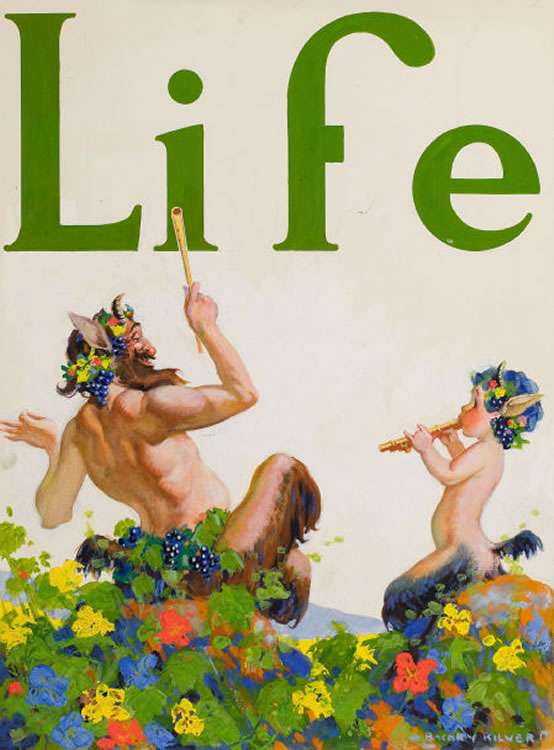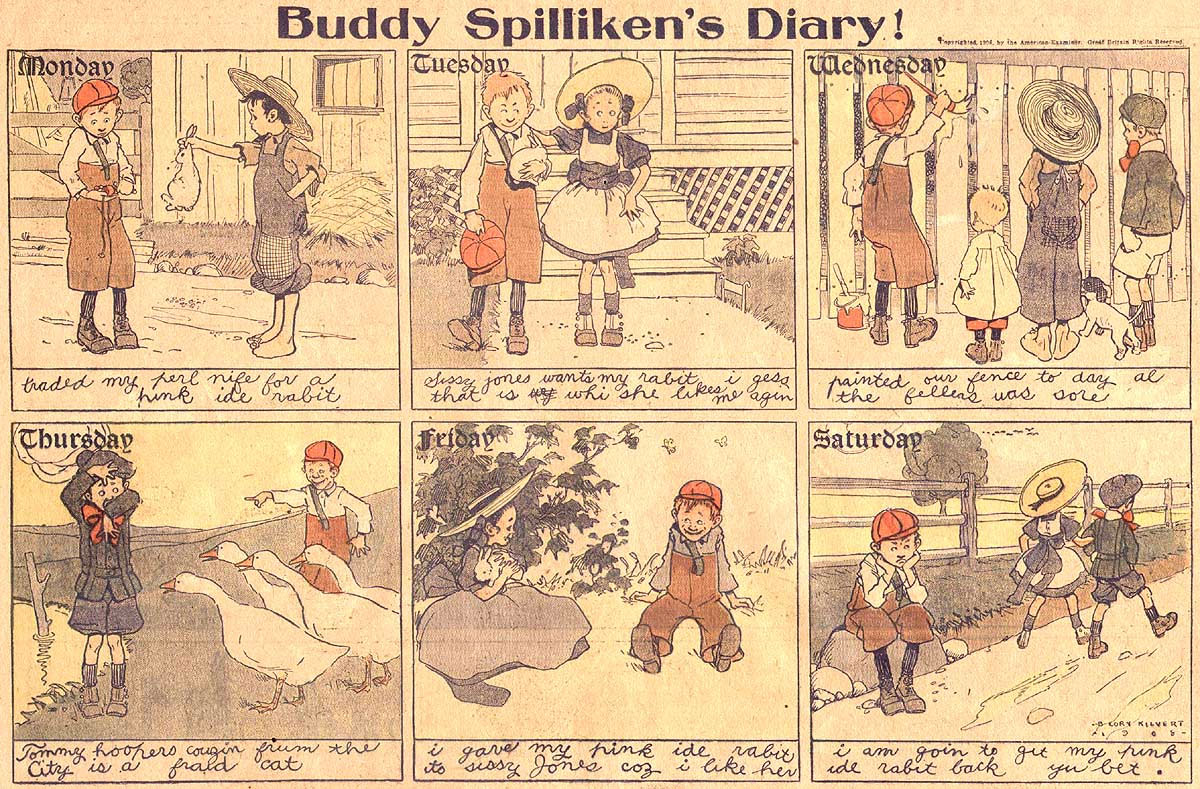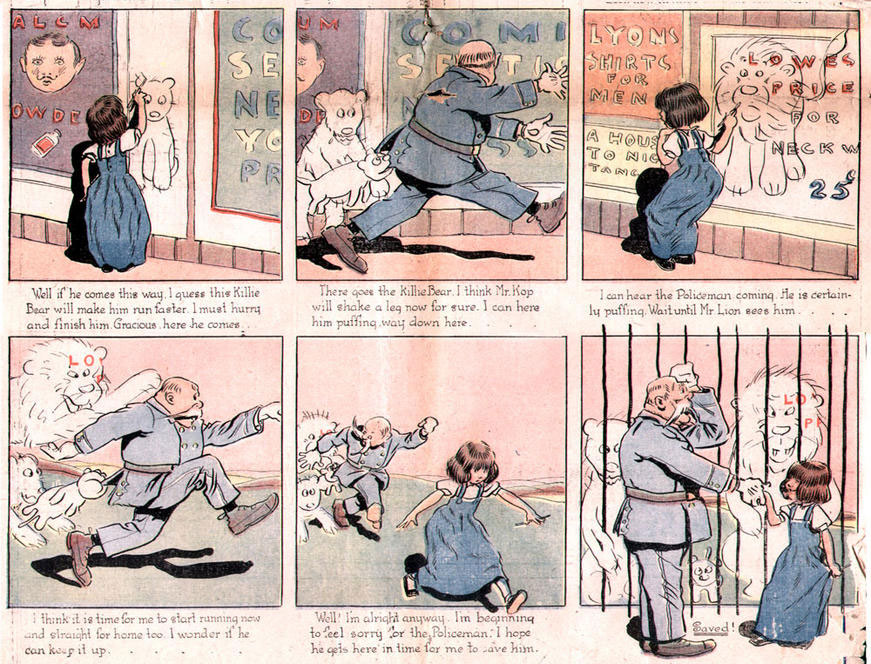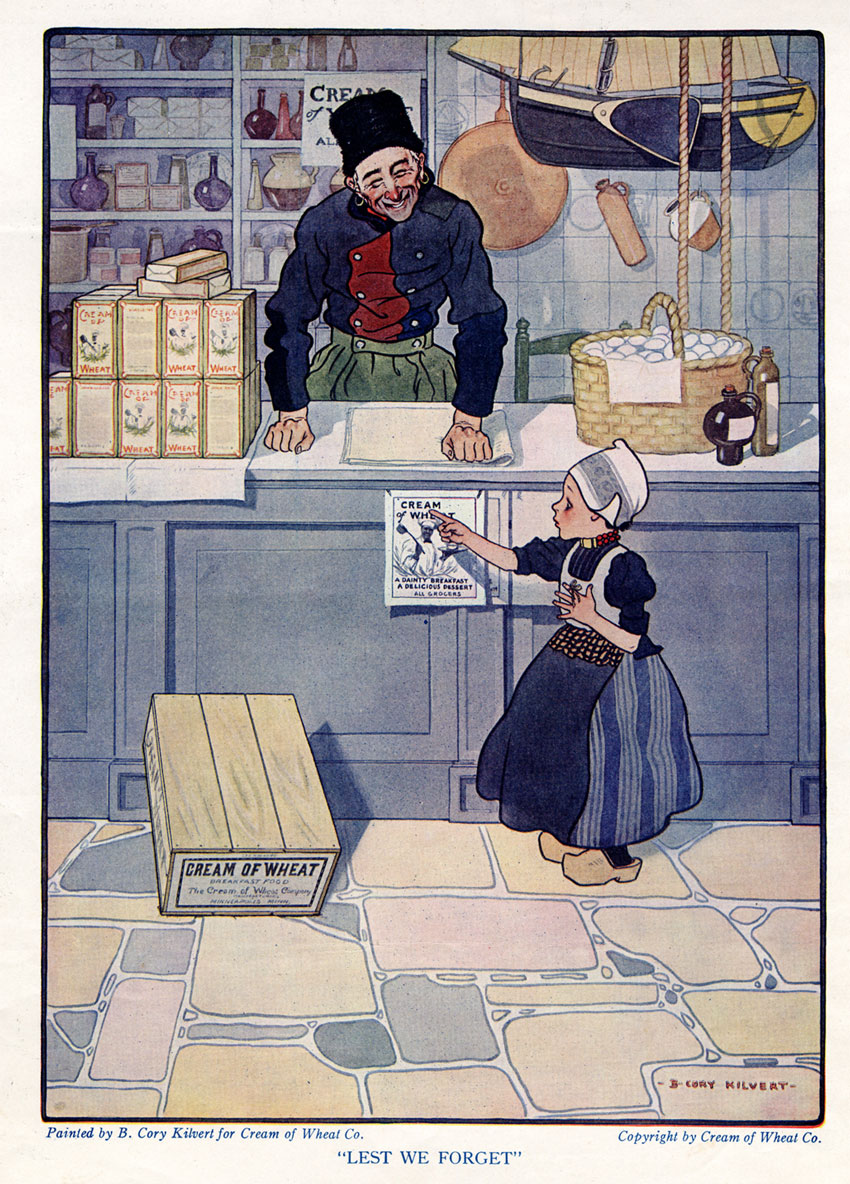'Muffy Snuggles'.
Benjamin Cory Kilvert was a Canadian-American painter, illustrator and cartoonist. Praised for his watercolor paintings, he was mostly known for his magazine illustrations during the first half of the 20th century. His limited work in newspaper strips have included the Sunday comics 'Muffy Shuffles' (1908), 'Buddy Spilliken's Diary' (1908) and 'Dorothy And The Killies' (1914-1915). He is often referred to as B. Cory Kilvert.
Early life
Benjamin Sayre Cory Kilvert was born in 1879 in Hamilton, Ontario. His father was Francis Edwin Kilvert, mayor of Hamilton, Ontario (1877-78), Conservative Member of Parliament (1878-1887) and Collector of His Majesty's Customs for the Port of Hamilton (1887-1910). Kilvert's cousins from the American branch of the Cory family were the future cartoonists John Campbell Cory (1867-1925) and Fanny Young Cory (1877-1972). Another famous relative was Kate Cory (1861-1958), who was known as a fine artist and photographer. As a child, Kilvert already showed a talent for drawing, although his schoolmates were allegedly not always amused by the caricatures he made of them. According to an article in the December 1902 issue of The American Printer magazine, he "got into more than one scrape" for making them.
Painter
While still a young man, Kilvert left Canada to study at the Art Students' League in New York City. One of his teachers was the painter Robert Henri, who taught him to paint life as it appears without attempting to romanticize it. Even though he was mainly known as an illustrator and not so much as a painter, Kilver was a respected member of The American Watercolor Society, but also of two New York City-based clubs for artists and writers, the Salmagundi Club and the Dutch Treat Club. During his early years in Upstate New York, he worked in oils and tempera, creating landscapes and still lifes. In later years, he turned to watercolors, for instance many seascapes of the coast of southern Maine.
"Satyr and Pan", cover illustration for Life Magazine (26 April 1923).
Illustrator
Around 1899, Kilvert began his career as an illustrator, joining the art department of the New York Evening World, and then working for the publishing company Harper & Brothers. From 1902 until the mid-1930s, he operated as a freelance artist, providing artwork for many books and magazines. His artwork appeared on the covers and interior pages of magazines like Life, Harper's, Collier's, Outing, Frank Leslie's Monthly and the Metropolitan, as well as the newspapers the New York Herald, the New York Journal and the Hamilton (Ontario) Spectator. According to the aforementioned American Printer article, he was particularly praised for his portrayals of children: "His drawings in each instance reflect the child-soul of his model. (...) It was really his depiction of the mischievous boy that first brought him to the attention of the art world, in which he has since played a conspicuous part. His realization of the juvenile is natural, and consequently shows much of what may be termed originality. Instead of striving for some ultra effect, Kilvert draws children as they exist, and draws them artistically, adding, perhaps, a capricious sentiment of Kilvert that does not detract, but accentuates, the reality of the drawings."
Early newspaper comics
During his freelance years, Cory Kilvert also tried his hand at newspaper comic features. Among his early known creations are the weekday strip 'Mike The Meddler' (New York World, 22 April - 12 May 1904) and the Sunday strip 'Muffy Shuffles' (Philadelphia Press, 8 March - 24 May 1908), about a poor city girl trying and failing to hold a variety of jobs.
Buddy Spilliken's Diary
Between 18 October and 29 November 1908, William Randolph Hearst's American-Journal Examiner syndicated Kilvert's short-lived Sunday comic 'Buddy Spilliken's Diary', starring the everyday antics of a countryside kid. Each panel focuses on a different day of the week, recounting what Buddy did that day. The narration under the panels is written in deliberately clumsy handwriting, with ink spots, misspellings, erased words and "dancing letters", to evoke a child's handwriting. Remarkably enough, the Hearst organization didn't run the feature in its main New York American's Sunday comics section, but only made it available to other papers as a replacement. A similar comic running in The Netherlands a decade later was the long-running newspaper feature 'Uit het Kladschrift van Jantje' (1916-1936) by Felix Hess, and, more than half a century later, Jack Mendelsohn's 'Jacky's Diary' (1959-1962). Both went a step further and combined deliberate child-like writing with drawings that look like an infant made them.
Dorothy and the Killies
This lack of interest might explain why Kilvert's next strip ran in a lesser-known newspaper, the New York Press. Between 29 November 1914 and 16 May 1915, this paper ran his 'Dorothy And The Killies' Sunday strip, about a girl who can make her drawings come to life. But instead of creating sweet animals and fairy tale creatures, Dorothy draws bloodthirsty homicidal animals, which she calls "Killies", and sends them after whoever bothers her. The comic may have been inspired by another newspaper comic, Ed Payne's 'Billy the Boy Artist' (1899-1955), in which the titular boy character paints realistic looking images that constantly fool his environment. And more than a half century later, British comic artist Peter Maddocks also created a comic strip about a girl whose crayons have magic abilities: 'Penny Crayon' (1976), later adapted into an animated TV show.
Final years and death
For most of his life, Benjamin Cory Kilvert and his family resided in the state of New York. In the 1910 U.S. Federal Census, Kilvert, his wife Elise, daughter Dorothy and a servant lived in Woodbury, New York on Pine Hill Road. According to the 1930 census, the Kilverts lived in Washington, D.C., but by 1942, the artist was back in Manhattan, New York City. He was married twice. With his first wife he had a daughter, Dorothy, with his second wife a daughter and a son, Janice and Cory B. Jr. In 1934, Kilvert suffered a heart attack, and while recovering in Charleston, South Carolina, he painted scenes from the city life.
In the early 1930s, he was commissioned to paint several large illustrated maps, for instance one of the history of the St. Lawrence River Valley in Canada, two maps for the Pine Valley Golf Club in Pine Valley, New Jersey, and of the Belvoir Hunt in England. Benjamin Cory Kilvert died in 1946 at the Salmagundi Club in New York City while playing pool with some of his artist friends.
His son Benjamin Sayre Cory Kilvert Jr.Cory (1930-2016) was a photo journalist and writer, working for New York advertising agencies in the field of agricultural chemicals and later as a communication officer for the Federal Disaster Assistance Administration. As a researcher/writer, he specialized in British Military History spanning from 1854 to 1918.
"Lest We Forget", full-page advertisement for Cream of Wheat (1907), which ran in magazines like the Saturday Evening Post.


